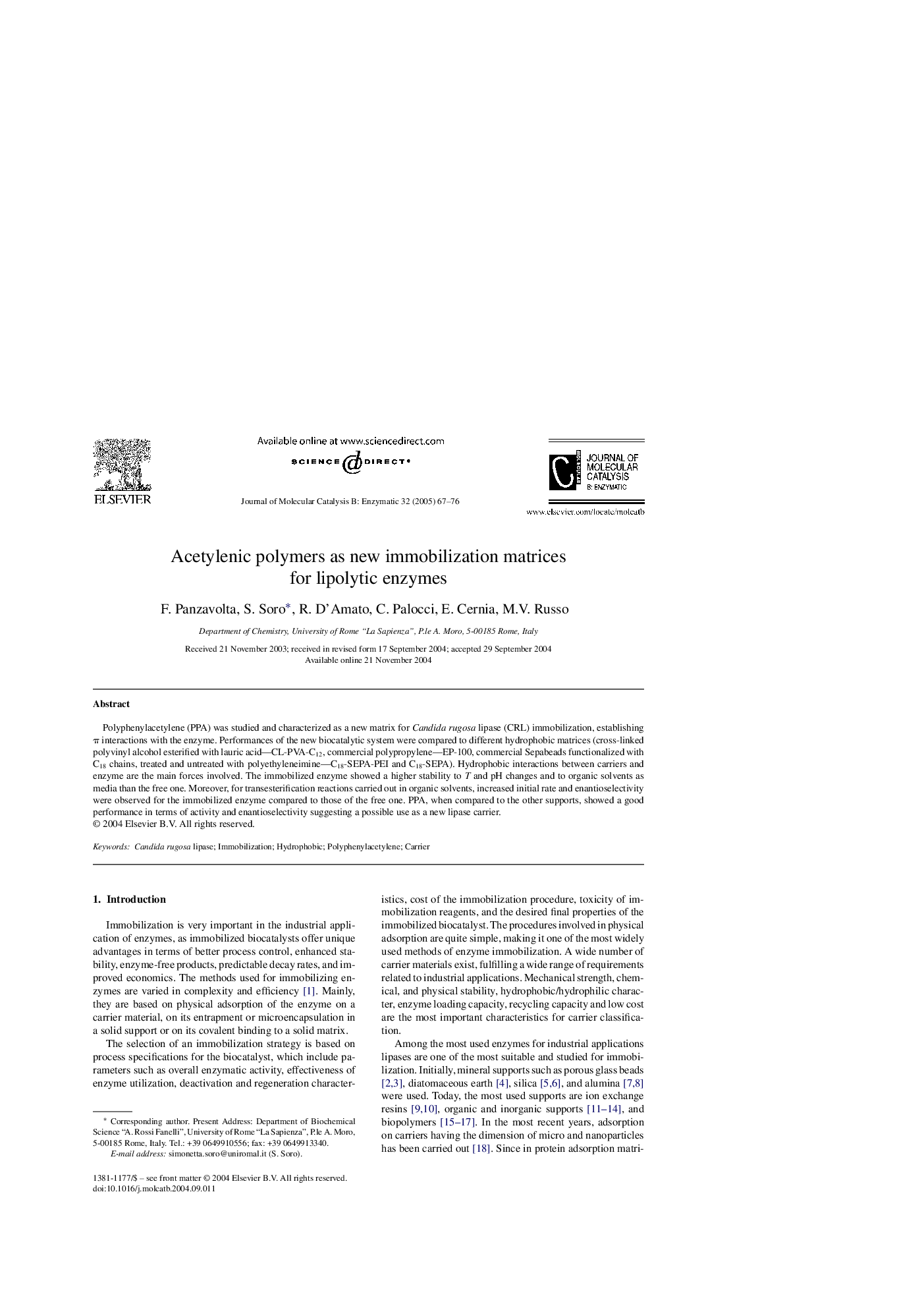| Article ID | Journal | Published Year | Pages | File Type |
|---|---|---|---|---|
| 10247833 | Journal of Molecular Catalysis B: Enzymatic | 2005 | 10 Pages |
Abstract
Polyphenylacetylene (PPA) was studied and characterized as a new matrix for Candida rugosa lipase (CRL) immobilization, establishing Ï interactions with the enzyme. Performances of the new biocatalytic system were compared to different hydrophobic matrices (cross-linked polyvinyl alcohol esterified with lauric acid-CL-PVA-C12, commercial polypropylene-EP-100, commercial Sepabeads functionalized with C18 chains, treated and untreated with polyethyleneimine-C18-SEPA-PEI and C18-SEPA). Hydrophobic interactions between carriers and enzyme are the main forces involved. The immobilized enzyme showed a higher stability to T and pH changes and to organic solvents as media than the free one. Moreover, for transesterification reactions carried out in organic solvents, increased initial rate and enantioselectivity were observed for the immobilized enzyme compared to those of the free one. PPA, when compared to the other supports, showed a good performance in terms of activity and enantioselectivity suggesting a possible use as a new lipase carrier.
Related Topics
Physical Sciences and Engineering
Chemical Engineering
Catalysis
Authors
F. Panzavolta, S. Soro, R. D'Amato, C. Palocci, E. Cernia, M.V. Russo,
